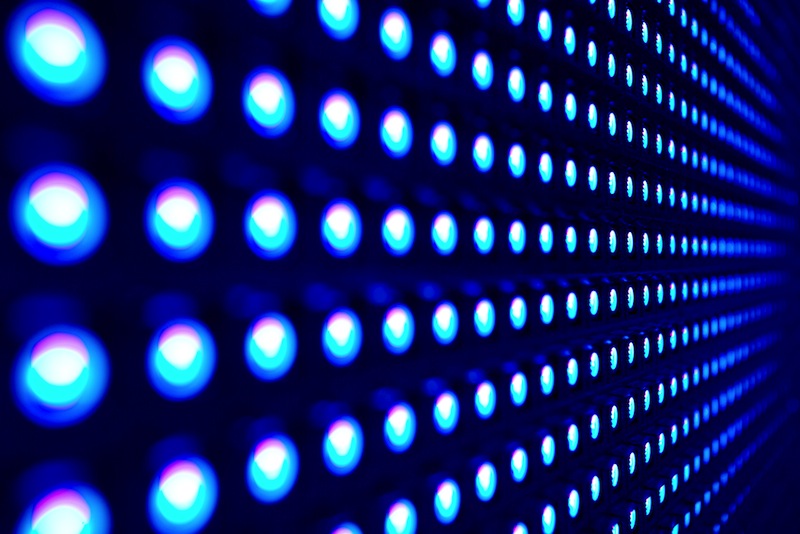How 'Quantum Dots' Could Probe Mysteries of Entanglement

A microwave laser built using tiny particles that act as semiconductors could be used to explore strange phenomena such as quantum entanglement.
Researchers at Princeton University used quantum dots — tiny particles of light-emitting nanocrystals that can absorb light from one wavelength and convert it to highly saturated light at specific wavelengths — to build a so-called "maser" that emits light at longer wavelengths than the traditional lasers that we can see. The device could also lead to advances in quantum computing.
Among other things, quantum dots could significantly improve the look of LCD screens on TVs, smartphones and tablets. Companies such as Apple, Samsung and Amazon are experimenting with — and in some cases, have already used — quantum dots in their devices. [10 Technologies That Will Transform Your Life]
When the dots are excited by a current, they emit light, which makes them a good medium for building lasers. The Princeton team, led by physics professor Jason Petta, built a small transistor-type device called a double-dot micromaser. It consists of four quantum dots, in two pairs, placed inside and toward the end of a narrow cavity.
The dots in each pair are separated by about 500 nanometers (for comparison, an average strand of human hair is about 100,000 nanometers wide). Between them are tiny wires, about 150 nanometers apart, arranged so that looking from one dot to another one would see them crossing the path like a fence. The setup functions like a transistor, with one dot as the current source, the other as the drain, and the wires as gate electrodes.
In the experiment, the whole apparatus was cooled to a few thousandths of a degree above absolute zero and hooked up to a battery. This created a tiny current and voltage, which allowed the electrons in the quantum dots to "tunnel" from the source dot to the drain, through the wires that make up the gate electrodes. When an electron tunnels through, it releases a particle of light, called a photon, in the microwave range. Each time the two sets of dots release a photon, they reinforce each other, and emit coherent photons, in step with each other — a maser.
The tunneling happens because the gate electrode's wires are like barriers that an electron has to hop over. In the everyday world, particles can't go through such barriers — getting over a fence typically requires expending a certain amount of energy to lift an object over it. In quantum mechanics, however, that isn't true: There's some probability that an electron will get through a barrier as long as a certain energy threshold is reached. When it does tunnel through, it loses energy.
Get the world’s most fascinating discoveries delivered straight to your inbox.
"It's like a staircase," Petta said. "When the electron runs down the staircase it emits a photon." That photon's wavelength is proportional to the "height" of the staircase — the amount of energy lost.
One aspect that makes this technology a step up, Petta said, is that the frequency of the maser is tunable. By adjusting the amount of current in the gate electrode, it's possible to alter the amount of energy the electrons need to tunnel through. In ordinary lasers the frequency of the emitted light is fixed, because it's determined by the material used to create the laser beam.
Masers could be used to perform experiments in quantum entanglement. The electrons in the two quantum dot pairs interact via the light waves they emit. So, it's possible to measure the states of the electrons to see if they are entangled (the states would be correlated). While the researchers didn't conduct full entanglement experiments, Petta said, they can use this setup to show that correlation happens over longer distances. Previous experiments had used single quantum dots, and the separations between particles were only about 50 nanometers.
The ability to create correlated quantum states over relatively large distances — a millimeter or more — has applications in quantum computing, since such correlated states are part of the processing in such machines.
Etanglement is also a key part of quantum cryptography. If an encryption key is encoded using entangled particles, then anyone who tries to eavesdrop and discover the key will alter the entangled state, revealing themselves (and alerting the intended recipients they should use another key).
The new study was published online yesterday (Jan. 15) in the journal Science.
Follow Live Science on Twitter @livescience. We're also on Facebook & Google+. Original article on Live Science.



